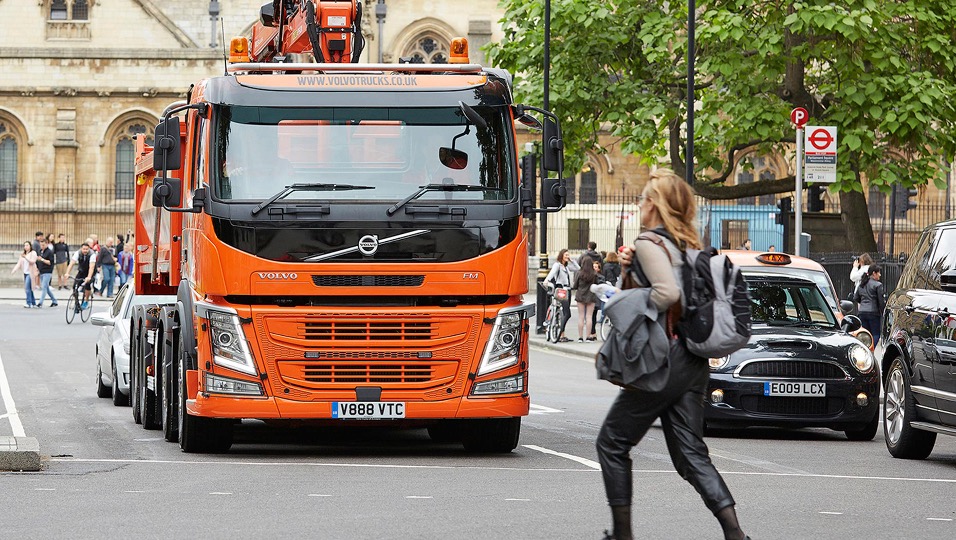
Direct Vision 5 Star Rating System
The Direct Vision 5 Star Rating System is a groundbreaking initiative addressing the critical issue of blind zones in commercial vehicles and their impact on road safety.
Direct Vision and Fleet Safety: Why it matters
Across the world, private and government fleet operators are increasingly recognizing the benefits that improving driver visibility (also known as direct vision) can play in meeting vehicle safety goals and increasing driver satisfaction. Improvements in truck cab design have allowed manufacturers to reduce blindspots. This increased visibility from the driver’s seat means that drivers have more time to react to, and avoid crashes, fatalities, and injuries. Data from London, where heavy goods trucks have been required to meet a direct vision standard since 2019, shows a 75% reduction in fatal crashes where vision was a factor. Similarly, vision-related crashes causing severe injuries fell 64% from 2017 to 2021.
However, many standard trucks currently in use in the U.S. have large, dangerous blind zones; significant areas where the driver cannot see the road or objects in front of them or to their side. A recent report from the U.S. DOT Volpe Center, looking at heavy duty trucks in the Boston municipal fleet identified numerous commonly deployed makes and models with frontover and side blind-zones over 10’. This means that a driver, stopped legally 5’ before the crosswalk, often cannot see people in the crosswalk directly in front of them.
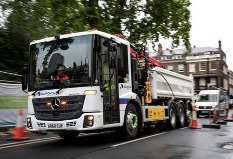
A Direct Vision truck operating in London. The driver can clearly see the road and people moving around the vehicle.
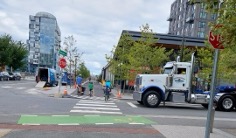
A conventional truck in Cambridge, MA. The design of this truck cab means that, even though the driver has stopped appropriately at the stopbar, they cannot see the people or cyclists in the crosswalk directly in front of them.
Nationally, NHTSA data shows that the number of frontover fatalities – instances where a driver hits and kills someone directly in front of them – has almost doubled in the past 5 years from 284 fatalities in 2015 to 526 frontover fatalities, and over 10,000 injuries, in 2020. A 2006 University of Michigan study found that 20 percent of truck-initiated crashes are linked to poor visibility from the driver’s seat. A UK study, conducted by ARUP, found that driving a traditional cab resulted in a 23% increase in pedestrian collisions versus trucks optimized for direct vision.
While cameras, mirrors, and other sensors (also known as “indirect vision tools”) can help mitigate these blindspots, they are not a full replacement for eliminating or reducing those blind zones in the first place. Drivers who can directly see – without the aid of cameras, mirrors, and sensors – react up to ¾ of a second faster than drivers using cameras, mirrors, and sensors. In fact, in UK studies, *distracted* drivers in high/direct-vision cabs reacted faster than drivers who were paying attention in conventional low-vision cabs. Especially at high speeds, heavy vehicles can travel significant distances even in a split second. Cab design that allows drivers to react sooner and faster can mean the difference between life and death.
TSR’s work on this issue and our members – the owners and operators of key fleets – that travel on both US and global roads each day, have a unique opportunity to contribute to and support changes to vehicle design and ultimately improve safety on our roads. And, programs like our Direct Vision Rating System help them do exactly that.
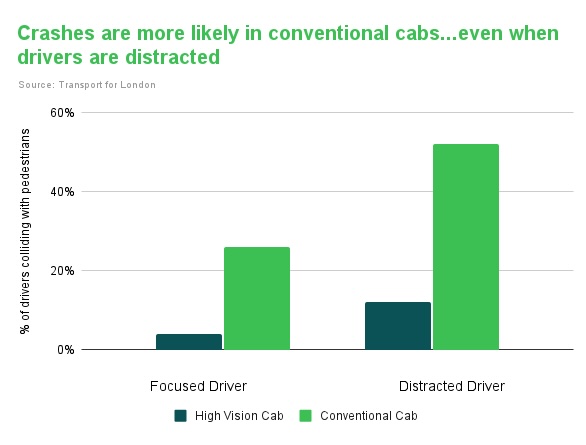
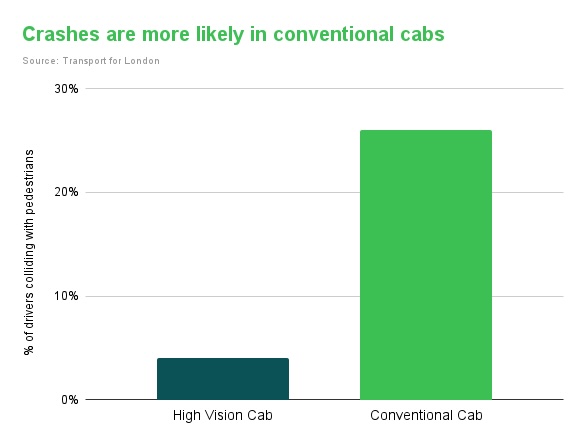
Enhancing Safety through a New Direct Vision Star Rating System
In 2023, Together for Safer Roads created the first North American Direct Vision Star Rating System in partnership with public and private sector fleets, government officials, and industry experts, including Boston, New York City, Transport for London, the U.S. DOT Volpe Center, as well as operators like AB InBev, City Harvest, Interstate Waste Services, and Republic Waste Services. The rating system provides policymakers and fleet operators with a direct, easy to use tool to assess the blind zones of their current fleet vehicles and make better informed purchases when procuring new trucks. We believe it will also encourage fleet owners to retrofit poorly rated vehicles to improve visibility and reduce the size of their blind zones.
The TSR 5 Star Rating System is a rapid decision-making tool that allows fleet owners to quickly assess the visibility from the driver’s seat of vehicles currently in their fleet. Visibility measurements typically take 10 minutes per vehicle and can be conducted by anyone with a tape measure and a 4’ measurement indicator. To fully support fleets, TSR has created a physical Rating System “Test Kit” that it mails to participating fleets, which contains all the items to properly evaluate and measure their vehicles. In addition, TSR has a digital instruction manual to provide further context and support.
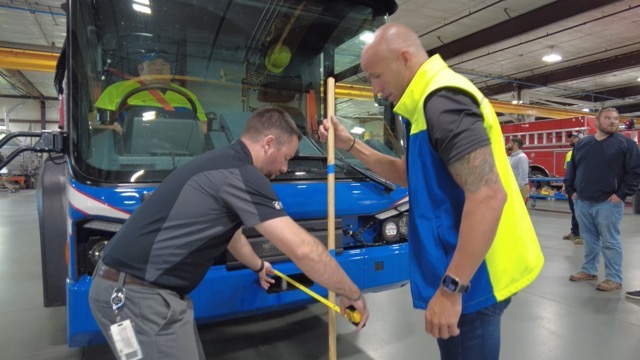
Order Your Direct Vision Test Kit
Fleet owners and managers can actively contribute to road safety by ordering their Direct Vision Test Kit today. Take the first step in understanding the blind zones of your fleet and making safer purchasing decisions
